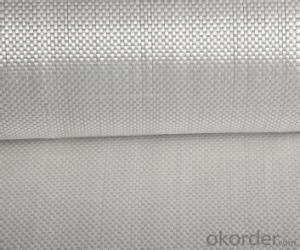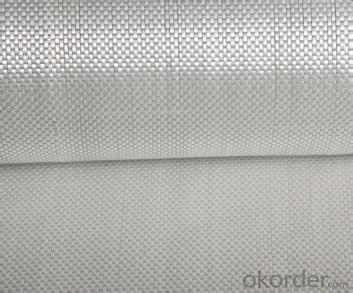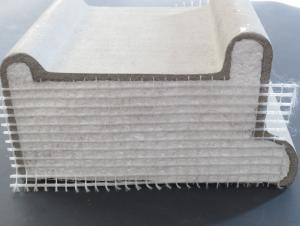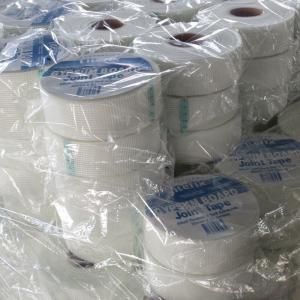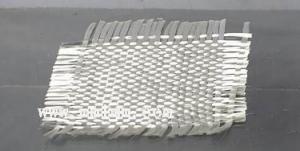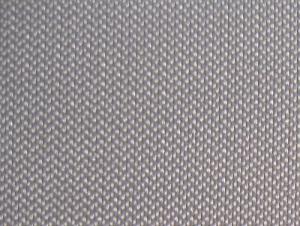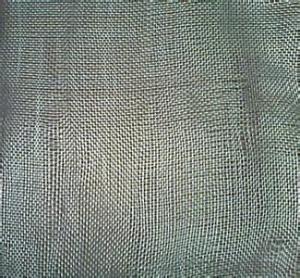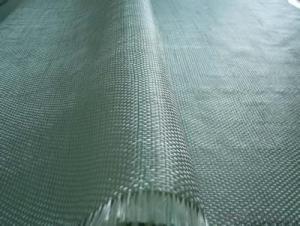Fiberglass Fabrics from Thailand Supplier - Fiber Silica Cloth 260 Grams/M2
- Loading Port:
- China Main Port
- Payment Terms:
- TT OR LC
- Min Order Qty:
- -
- Supply Capability:
- -
OKorder Service Pledge
OKorder Financial Service
You Might Also Like
Quick Details
| Place of Origin: | Model Number: | ||||
| Surface Treatment: | Weave Type: | Yarn Type: | |||
| Alkali Content: | Standing Temperature: | Silicone Type: | |||
| Application: | Type: |
Packaging & Delivery
| Packaging Detail: | Cartons or Customized |
| Delivery Detail: | as the contract |
Specifications
high silica cloth
1.Temperature Resistant
2.Long using life upto 10 years
3.Electric insulation
high Silica Coated Fiberglass Fabrics cloth
Silicone coated (impregnated) fiberglass fabrics are made of fiberglassbasic fabrics coated or impregnated with specially compounded silicone rubber on one or both sides. It has a lot of advantages such as high strength, fire retardant, high temp. resistance, chemical resistance, none-penetrative, non-toxic and so on.
Properties:
--Used in temperature from-70°C to 300°C
--Ozone, oxide, light and weathering aging resistance, excellent weather ability used in outdoors and ages can be reached to 10 years.
- Q: Can fiberglass fabric be used for ducting?
- Certainly! Fiberglass fabric is indeed suitable for ducting purposes. This lightweight and flexible material possesses outstanding insulation properties, making it an ideal choice. In the construction of air ducts, fiberglass is frequently utilized to regulate the system's temperature and airflow. It can either be wrapped around the ducts or used as a lining to achieve thermal insulation and hinder heat transfer. Furthermore, fiberglass has the added advantage of being resistant to moisture, mold, and mildew, making it perfect for ducting in humid environments. Nevertheless, it is crucial to emphasize that correct installation and sealing of fiberglass fabric are imperative to ensure optimal air quality and prevent loose fibers from infiltrating the duct system.
- Q: Can fiberglass fabric be used for making shoes?
- Yes, fiberglass fabric can be used for making shoes. Fiberglass is a lightweight and durable material that is commonly used in various industries, including automotive, aerospace, and construction. When applied to shoes, fiberglass fabric provides strength and stability to the footwear while keeping it lightweight. The fabric can be used to reinforce areas that require extra support, such as the toe cap or the heel counter, enhancing the overall durability and structural integrity of the shoes. Additionally, fiberglass fabric is also known for its resistance to heat and chemicals, making it an ideal choice for shoes that may be exposed to harsh conditions.
- Q: What are the different widths of fiberglass fabric available?
- Fiberglass fabric is available in a variety of widths to suit different applications and project requirements. The most common widths of fiberglass fabric range from 1 inch to 60 inches. However, it is important to note that specific suppliers or manufacturers may offer different widths based on their production capabilities and customer demands. Additionally, custom widths can often be accommodated upon request. It is recommended to consult with a supplier or manufacturer directly to determine the specific widths available for fiberglass fabric.
- Q: What is the tear strength of fiberglass fabric?
- The tear strength of fiberglass fabric varies depending on factors such as the thickness of the fabric, the type of weave, and the quality of the material. Generally, fiberglass fabric has a high tear strength due to the strong and resilient nature of the fiberglass fibers. It is known to be stronger than many other textile materials, including cotton, nylon, or polyester. However, it is important to note that tear strength can also be influenced by external factors such as temperature, exposure to chemicals or UV radiation, and the presence of any defects or damages in the fabric. Therefore, it is advisable to refer to the specific specifications provided by the manufacturer or conduct a tear strength test to determine the exact tear resistance of a particular fiberglass fabric.
- Q: Is fiberglass fabric resistant to chemicals used in mining?
- Yes, fiberglass fabric is highly resistant to chemicals used in mining. It is specifically designed to withstand harsh conditions and is known for its exceptional chemical resistance. Fiberglass fabric is impervious to most acids, alkalis, solvents, and other chemicals commonly used in mining operations. This makes it an ideal material for various applications in the mining industry, such as lining tanks, pipes, and other equipment that come into contact with corrosive substances. Furthermore, fiberglass fabric is also resistant to high temperatures, abrasion, and wear, making it a durable and reliable choice in mining environments.
- Q: Is fiberglass fabric suitable for use in architectural applications?
- Yes, fiberglass fabric is suitable for use in architectural applications. Fiberglass is a versatile material that offers numerous benefits for architectural purposes. Its high tensile strength and durability make it suitable for use in applications such as reinforcing concrete structures, creating lightweight panels and cladding systems, and providing insulation. Fiberglass fabric can be molded into various shapes and sizes, allowing architects and designers to create unique and creative structures. It is also resistant to corrosion, chemicals, and moisture, making it suitable for both interior and exterior applications. Furthermore, fiberglass fabric is fire-resistant and has excellent thermal insulation properties. This makes it an ideal choice for architectural applications where fire safety and energy efficiency are important considerations. Additionally, fiberglass fabric is lightweight, which makes it easier to handle and install compared to other materials such as steel or concrete. Its flexible nature allows it to be easily draped or wrapped around complex architectural features. Moreover, fiberglass fabric is available in a wide range of colors and finishes, allowing architects to achieve the desired aesthetic appearance for their projects. However, it is important to note that fiberglass fabric may require proper maintenance and periodic inspections to ensure its long-term performance. Additionally, it is essential to follow proper installation techniques and guidelines provided by manufacturers to ensure its suitability and effectiveness in architectural applications. In conclusion, fiberglass fabric is a suitable material for use in architectural applications due to its strength, durability, versatility, fire resistance, thermal insulation properties, and aesthetic options. However, it is crucial to consider specific project requirements and consult with experts to determine the most appropriate use of fiberglass fabric in each architectural application.
- Q: How is fiberglass fabric used in the production of automotive body parts?
- Fiberglass fabric is commonly used in the production of automotive body parts due to its numerous advantageous properties. It is a lightweight and strong material, making it ideal for creating durable and efficient automotive components. One of the primary uses of fiberglass fabric in the production of automotive body parts is in the manufacturing of car hoods. Fiberglass hoods are popular among car enthusiasts because they are significantly lighter than traditional metal hoods, thereby reducing the overall weight of the vehicle. This decrease in weight can result in improved fuel efficiency and enhanced performance. Additionally, fiberglass fabric is used in the production of fenders, spoilers, and other exterior body panels. These components need to be lightweight, yet robust enough to withstand road debris, impacts, and weather conditions. Fiberglass fabric provides the necessary strength and durability while also allowing for intricate design shapes and contours. Moreover, fiberglass fabric is used in the fabrication of interior automotive parts. It is commonly employed in the production of door panels, dashboard covers, and trim pieces. These components require a material that is both flexible and durable, and fiberglass fabric fits this criterion perfectly. It can be easily molded into various shapes and sizes, allowing for customization and achieving a sleek, modern aesthetic. In the manufacturing process, fiberglass fabric is typically combined with a resin matrix, such as polyester or epoxy, to create a composite material. The fabric is first impregnated with the resin, and then it is molded or pressed into the desired shape using heat and pressure. This process ensures that the fiberglass fabric adheres well to the resin, resulting in a strong and rigid final product. In conclusion, fiberglass fabric plays a vital role in the production of automotive body parts. Its lightweight nature, strength, durability, and versatility make it an excellent choice for creating various exterior and interior components. By utilizing fiberglass fabric, automakers can achieve both performance enhancements and aesthetic appeal in their vehicles.
- Q: Can fiberglass fabric be used for reinforcement in pharmaceutical tanks?
- Yes, fiberglass fabric can be used for reinforcement in pharmaceutical tanks. It is a common choice due to its strength, durability, and resistance to corrosion and chemicals. Additionally, fiberglass fabric is lightweight and easy to handle, making it suitable for various industrial applications, including pharmaceutical tank reinforcement.
- Q: Can fiberglass fabric be used for reinforcement in automotive parts?
- Indeed, automotive parts can be reinforced with fiberglass fabric. Renowned for its exceptional strength-to-weight ratio, fiberglass fabric proves to be an optimal material for reinforcing diverse components within automobiles. Its utilization is prevalent in the production of body panels, hoods, fenders, and other integral structural parts of vehicles. By endowing remarkable rigidity and stiffness, fiberglass fabric significantly enhances the overall strength and longevity of automotive parts. Furthermore, its resistance to corrosion, coupled with its ability to endure high temperatures, renders fiberglass fabric highly suitable for deployment within the automotive industry.
- Q: Can fiberglass fabric be used for insulation in underground structures?
- Indeed, insulation in underground structures can be achieved by utilizing fiberglass fabric. This fabric is highly favored for its exceptional thermal characteristics and ability to withstand moisture. It is widely employed in numerous applications, notably in underground structures like basements, tunnels, and underground storage facilities. Typically, the fabric is positioned as a layer between the structure's walls or ceiling and its interior finish, serving as a protective barrier that curbs heat loss or gain and promotes a pleasant temperature within the structure. Moreover, fiberglass fabric is renowned for its lightweight nature, flexibility, and simplicity of installation, rendering it a convenient choice for insulating subterranean spaces.
Send your message to us
Fiberglass Fabrics from Thailand Supplier - Fiber Silica Cloth 260 Grams/M2
- Loading Port:
- China Main Port
- Payment Terms:
- TT OR LC
- Min Order Qty:
- -
- Supply Capability:
- -
OKorder Service Pledge
OKorder Financial Service
Similar products
Hot products
Hot Searches
Related keywords
